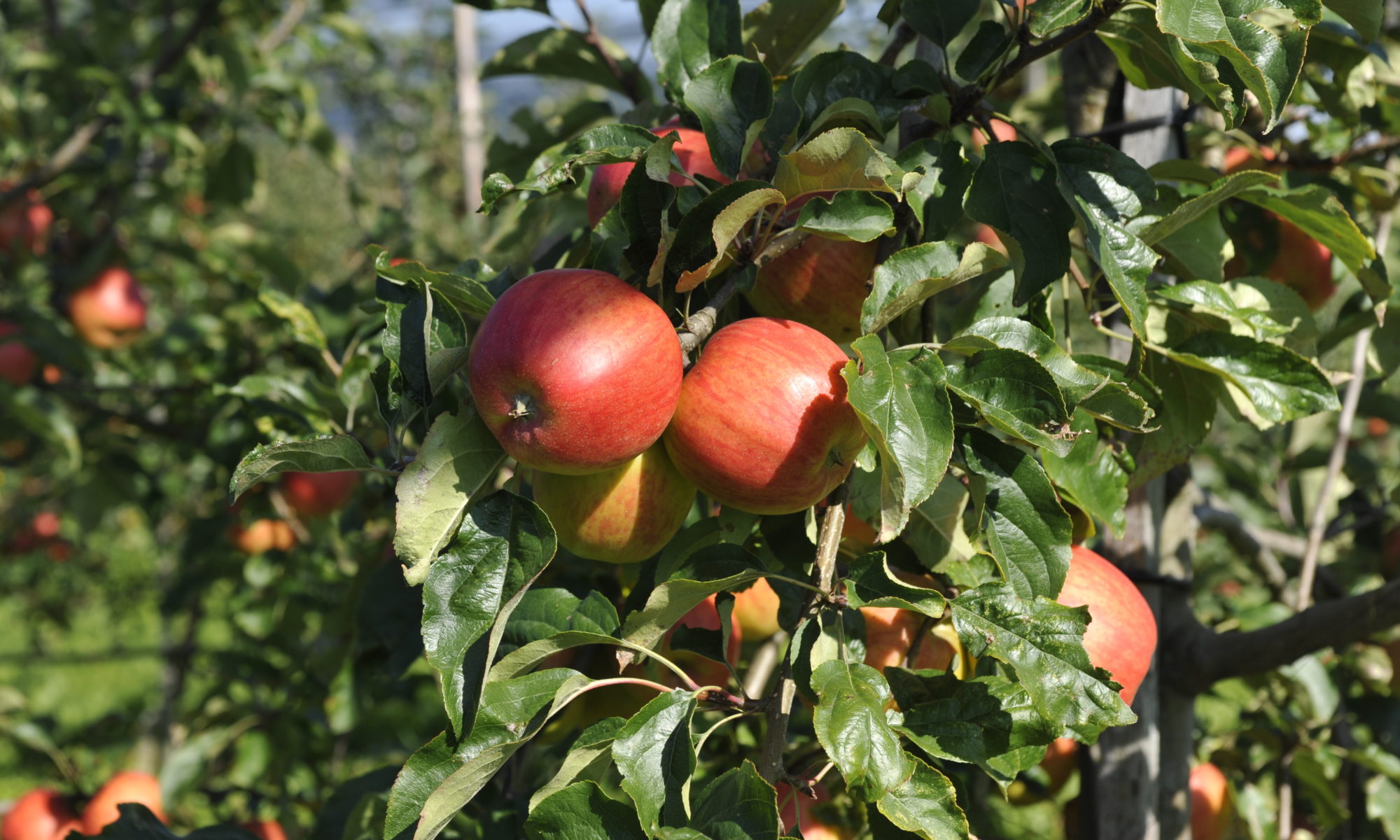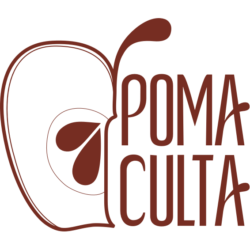Finding breeding objectives
Breeding objectives are based on the plant in its environment, as well as its use for humans. From a human perspective traits concerning the quality and quantity of the fruit are of importance. To create a healthy plant however, the potential of the plant within its environment should also be considered. This includes questions such as how the plant grows, why it grows well, what traits it could be developing and of course what will its future fruit be like?
Man’s desires and the potential the plant carries need to be combined and coordinated. The organic breeder is especially concerned with respecting the plants integrity and not demanding the impossible. At a basic level the plant should be healthy, harmonious and full of vigour.
At Poma Culta we are convinced that these core traits not only further the wellbeing of the plant, but also enhance the wellbeing of the person who consumes its products. By taking a holistic approach, these characteristics can be protected, whilst also focusing on more specific singular traits.
What do we expect from a new cultivar?
1. Dessert fruit of better quality (firm, juicy, aromatic…)
2. Good shelf life and storage potential
3. Good agronomic traits (high, regular and secure yields)
4. Suitable varieties for organic agriculture (resistance to and tolerance of pests and diseases)
Where to start?
Any breeding process begins with the question: What material do I use? To avoid looking at only singular traits, the plant with all its history is traced back to its beginning. Parent plants can be categorised into the following types:
1. Local cultivar: Local cultivars are not the products of conscious breeding efforts, but rather, they are the results of relationships between people and crops. From the thousands of local cultivars (more information here: www.fructus.ch), some have characteristics which are of interest. For example the variety Alant has a high tolerance to fireblight, while the variety Ananas Reinette has an extraordinary taste. By choosing a local cultivar as a parent, such desirable characteristics could be incorporated into the new variety. Additionally, by increased usage of local cultivars, the distribution of the genetic base is insured. However, as these cultivars were created by chance a long time ago, their characteristics are not fully documented. This can lead to a diversity of traits in the offspring, as the cultivar does not necessarily exhibit varietal purity.
Over the past 20 years the Research Institute Agroscope Wädenswil in Switzerland has catalogued local cultivars and reviewed them according to characteristics of interest, such as field resistance to fire blight or scab. As of 2016, thirty top varieties from this investigation are accessible to Poma Culta.
Comment: globally known varieties such as Golden Delicious, Granny Smith and Braeburn are also local cultivars. Today Golden Delicious is the base cultivar for most new varieties.
2. Chance Seedlings: Every germinated apple seed produces something new. These seedlings can be found everywhere: at the side of the road, in the bushes, at your favourite picnic site etc. Most of these seedlings do not provide useful characteristics. However a systematic search by the Dutch research scientist Tijs Visser in the 90s resulted in the find of a chance seedling on Schiermonnikoog, a small island in the North Sea, This seedling had remarkable scab tolerance, which is of great interest to the organic farming community. Therefore using chance seedlings as parents should not be ruled out.
3. Modern Cultivars: Most of the cultivars sold today can be traced back to just a hand full of base varieties (Cox Orange, Golden Delicious and Jonathan Wagener). Most of the genetics of modern varieties originate from Golden Delicious.
Modern cultivars have good traits in regards to: appearance, taste and crispness. However, the taste is usually found to deviate very little, especially when related to Golden Delicious. Additionally, storage related characteristics are well established such as pressure resistance, or shelf life. Mostly however, modern cultivars have very poor resistance to pests and diseases and are highly dependent on pest management strategies (exceptions in point 4.) Therefore they are of little use for organic production systems.
4. Modern cultivars with Resistances: For decades apple breeders have been working on varieties which are resistant to plant diseases. The most common objective is to find varieties resistant to apple scab. The methodology in most cases entails finding apple genes in wild cultivars which when present are linked to inducing a resistance in the new cultivar. In a multiple-step breeding process the resistant gene is crossed into the new cultivar for production. Currently there are a host of such varieties available and incorporated into organic apple production. Unfortunately monogenic inheritances tend to be overcome by diseases within a few years. Throughout most of Europe such inheritances have been broken, thus research is now focused on polygenic resistances from local cultivars. Whilst being more laborious, this promises a more sustainable approach.
5. Unsuitable parent material: unsuitable materials are all cultivars and seedlings including propagates of these, which were developed with breeding methods that are not compatible with organic breeding objectives. These methods include genetic engineering or protoplast fusion to name just a few.

